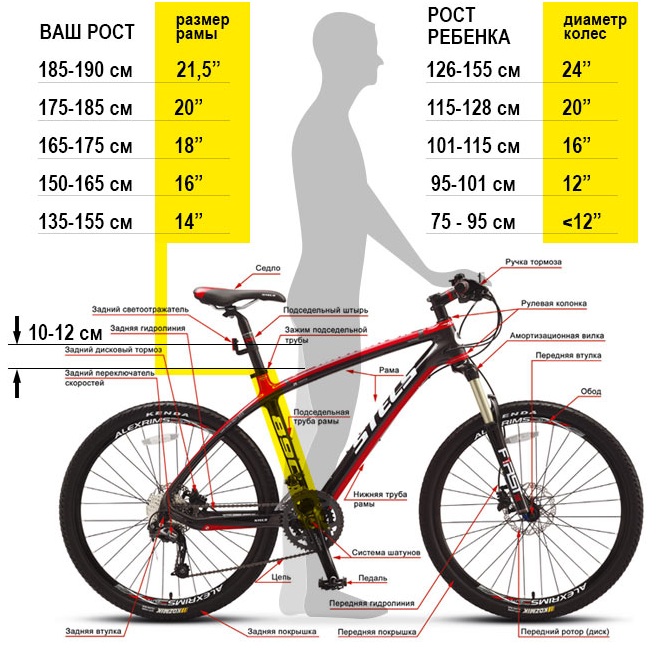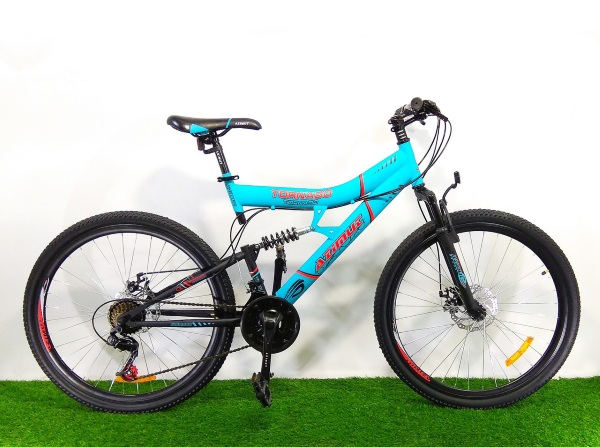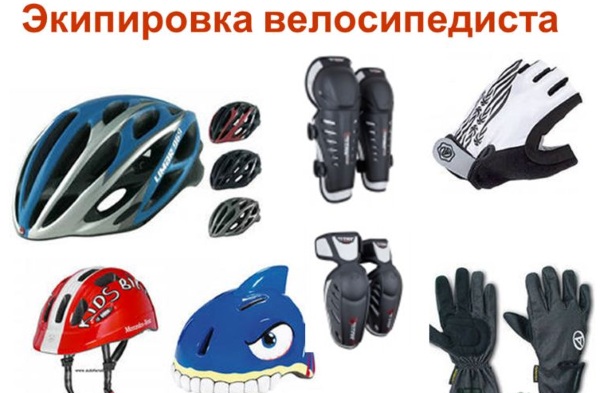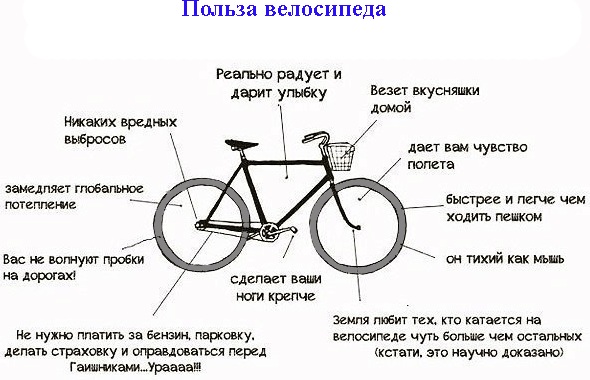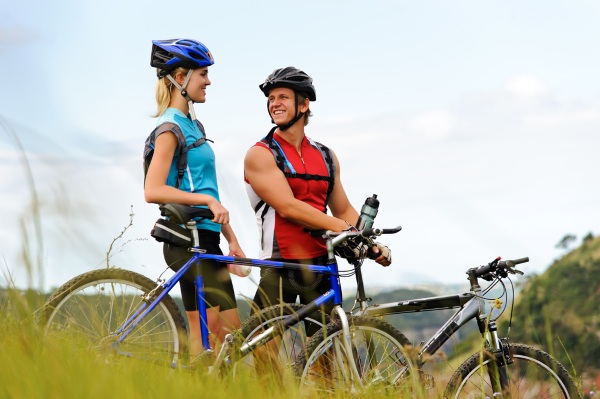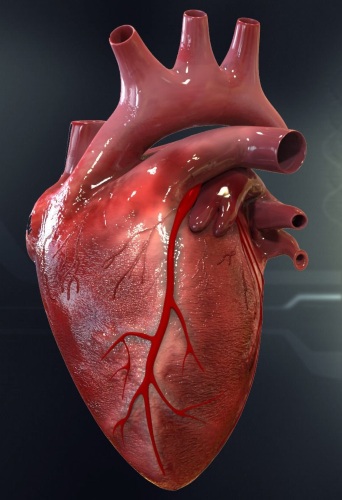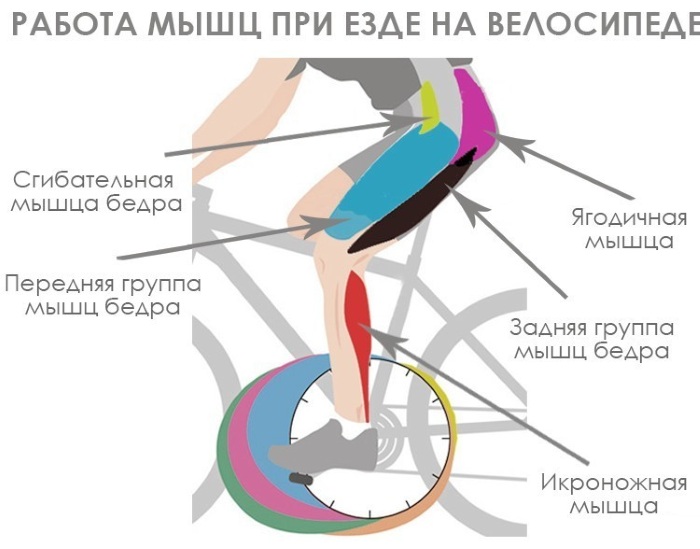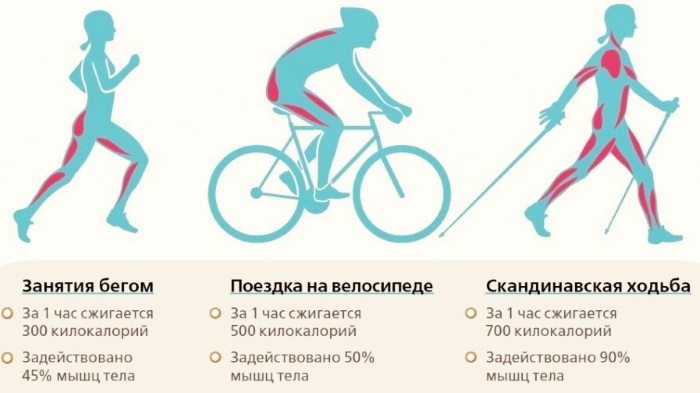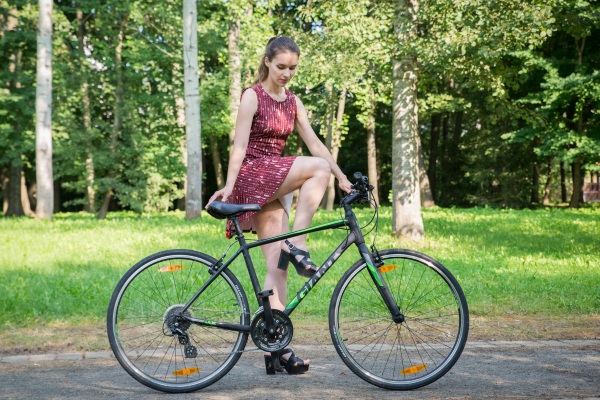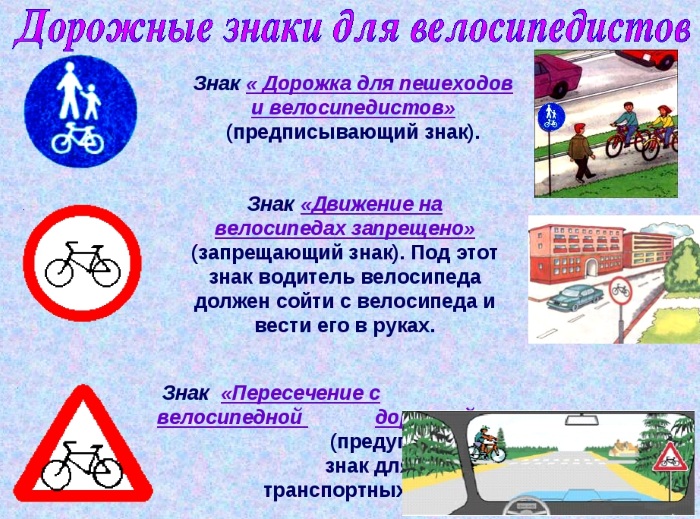Using a bicycle for transportation is good for your health. It is proven that cycling trains all body systems, strengthens muscles and immunity. However, there are several negative and harmful effects on the body.
How to choose the right bike
Cycling (the benefits and harms depend on the correct choice of vehicle) requires preliminary preparation. Answering the following questions will help you choose the right bike.
Who is the bike for: gender, age, weight, height?
It is recommended to select a bike individually.
It is important to consider:
- Floor. For women, these can be special bicycles with a low frame and cheerful colors, as well as bicycles created taking into account the parameters of the female body - "women" bicycles. For most women, regular men's bikes are fine.
- Age. The bike can be for adults or children.
- Weight. If a person weighs more than 90 kg, a bike with a front shock (hardtail), double (reinforced) rims, a cassette hub and frames made of aluminum or steel (not carbon) is recommended.
- Growth. The bike frame is sized according to your height. Frame size matching table for height:
| Height, cm | Frame size | cm | Inches |
| from 140 to 155 | XS | 34 | 13 |
| from 150 to 165 | S | 38 | 15 |
| from 160 to 175 | M | 44 | 17 |
| from 170 to 185 | L | 48 | 19 |
| from 180 to 195 | XL | 54 | 21 |
| from 190 and above | XXL | 58 | 23 |
Where, on what terrain, and on what roads will it be driven?
Choose the type of bike that suits your intended ride:
- Mountain bike. It is versatile. A widespread option when choosing for travel on any road. Has amortization. Easily modified according to the owner's needs.
- Road bike. A specialized bike without shock absorption. Lightweight and fast. Used for driving on good asphalt roads. Impractical and expensive option.
- Cross bike. A universal model, has a good roll-off on asphalt roads, can move in off-road conditions. The price is slightly higher than that of a mountain bike.
- Extreme bike. Specialized models for jumping, trial, stunt and BMX. Impractical.
- Urban, foldable. Bicycles that are practical and comfortable to ride in the city. Not used off-road.
For beginners, a mountain bike or cross-country bike with front shock absorption is better suited. A bike like this would be the best option for your first purchase. In the future, it can be improved by adding or replacing some accessories.
What is the estimated cost of the bike?
Options:
- Less than $ 300. A modern model of a bicycle for an adult cannot be found for such a sum.That kind of money is enough to buy a child's, teen's or one-speed adult's bike.
- From 300 to 500 $. You can choose a budget bike model that has an initial or medium group of equipment, a simple suspension fork and mechanical brakes.
- From 500 to 1000 $. An improved model of a bicycle with a light and high-quality frame, a medium group of equipment, a normal suspension fork.
- From 1000 to 2000 $. LAn anniversary and semi-professional bicycle model with a light and reliable frame, an upper group of equipment, good shock absorption, hydraulic brakes. For buyers who know a lot about bicycles.
- More than $ 2000. Professional or exclusive model, assembled using new technologies, the best components, exclusive design. Suitable for athletes, amateurs, fans and wealthy people.

 Don't miss the most popular column article: Body drying for girls. Training program, detailed nutrition menu for a month by day.
Don't miss the most popular column article: Body drying for girls. Training program, detailed nutrition menu for a month by day.Cycling clothing
Cycling (benefits and harms depends on the choice of clothing) can be comfortable and enjoyable if cycling clothing is used.
Special clothing for cycling has several features:
- The ability to ventilate to cool the body during intense skiing.
- Drain sweat and help keep the skin dry to avoid moisture discomfort.
- Reduces the negative effect and distributes the load, allowing less fatigue while driving. Reduces the likelihood of injury.
- Optimizes aerodynamic performance by reducing drag.
A cyclist's outfit includes several elements:
- Cycling jersey or T-shirt made of synthetic fabric that can warm or cool, create a feeling of comfort through ventilation and sweat removal. Has reflective elements in summer models.
- Shorts or cycling pants. They can be in the form of cycling shorts or shorts with diapers that soften shocks, smooth out friction and successfully remove sweat. Silicone inserts provide cushioning. Preference is for tight-fitting models with elastic bands or suspenders. Trousers must have an elastic band around the lower leg.
- Jacket. Membrane fabric that resists wind, wicks moisture away, warms and creates a comfortable state. Must be selected according to size.
- Slimming leggings. More used by professionals.
- For winter skiing, it is mandatory to use balaclavas and special winter goggles.
- Underwear similar to thermal underwear - cools the body and wicks away sweat.
- Cycling gloves have a protective function. They prevent chafing, calluses, frostbite, sweating.
- Protect your head from possible injuries - a bicycle helmet.
- Special lightweight footwear designed for intense loads. Bicycle shoe covers.
The benefits and harms of cycling
Cycling (the benefits and harms are listed below) allows you to get to the destination faster and improve your overall physical and mental health.
Cycling contributes to:
- strengthening and tightening the leg and gluteal muscles;
- improving blood circulation and strengthening the heart muscle;
- maintaining vascular tone, preventing varicose veins;
- improving the functioning of the respiratory system, increasing metabolism;
- increased joint mobility and elasticity of cartilage tissue;
- improving mental and emotional state thanks to new impressions and positive emotions;
- elimination of stress and chronic fatigue;
- improving sleep and general well-being as a result of a half-hour bike ride in the evening.
- Accelerate weight loss by burning extra calories.
Disadvantages of excessive cycling:
- Cycling during an exacerbation of a chronic illness can lead to poor health.
- Do not ride until you are tired, which can overload your body.
- Incorrect seating can numb the muscles of the arms and legs.
- Risk of injury from possible falls and accidents.
- Inflammation of the genitourinary organs can occur with the wrong equipment according to the weather or the season.
The main problems are created by the frivolity and carelessness of the cyclist himself.
For men
Benefit:
- regular trips will help to normalize body weight without exhausting exercise on simulators;
- vascular support in good shape;
- prevention of diseases of the genitourinary system and problems with potency;
- improving the quality of sexual health;
- intensive oxygenation of the blood reduces the risk of Alzheimer's disease.
Harm:
- groin irritation may occur;
- numbness of the reproductive system;
- scrotal anomaly;
- possible onset of erectile dysfunction;
- risk of damage to the testicles;
- male infertility.
For women
Benefit:
- allows you to train all the muscles in the body;
- promotes weight loss;
- later onset of menopause and its easier course.
Harm:
- may reduce sexual sensations.
Possible contraindications for cycling
There are contraindications for cycling that cannot be ignored.
There are some points to consider:
- coordination disorders and related diseases can be dangerous when cycling;
- in case of heart and vascular disease, if there are serious violations of the activity of the heart muscle, a specialist consultation is needed;
- dysfunctions of cerebral vessels, vascular lesions and pathology, leading to disruption of the blood supply to the brain;
- fragility and fragility of bone tissue, a tendency of joints to dislocate;
- injuries and diseases associated with the musculoskeletal system limit the permissible speed of movement on a bicycle.
Which muscle groups work while cycling
Cycling (benefits and harms must be considered by both sexes) replaces muscle training on many machines.
Muscle groups exposed to stress during cycling:
- calf muscles with hamstrings;
- quads of the legs;
- hip flexors, iliac groin muscles;
- gluteal muscles;
- hamstrings;
- back muscles and abs;
- arm triceps;
- muscles of the shoulder girdle when driving on hilly terrain.
Losing weight while riding
Cycling can be more effective for weight loss than exercising on machines.
Basic principles:
- Cycling is energy intensive and calorie-free.
- After 40 min. from the beginning of the ride, the breakdown of fat deposits begins and occurs after the end for some time.
- The thighs are strengthened and the relief of the calf muscles is improved.
- After 2 weeks of training, the body becomes more toned.
- Muscles become stronger and more elastic.
Cycling is ahead of running in terms of calories burned per hour - Regular training will reduce body weight by 3-5 kg in a month.
Emotional condition
Cycling has a beneficial effect on mental and emotional well-being. The mood improves, the occurrence of depressive conditions is prevented. Cycling produces hormones of joy (endorphins). The body copes with stressful situations easier and faster.
Vision
Cycling has a positive effect on the organs of vision. It is important for a cyclist to constantly switch his visual attention from close objects to distant ones while driving on any route and track, thereby increasing the load on the muscles of the eyes. Increased eye muscle training leads to improved vision and prevention of eye diseases.
Immunity
Cycling hardens the body, increases the body's stamina and resistance to colds. There is a general strengthening of immunity.
Lungs
The respiratory system is strengthened. Due to the load during the ride, breathing becomes measured, deep and rhythmic.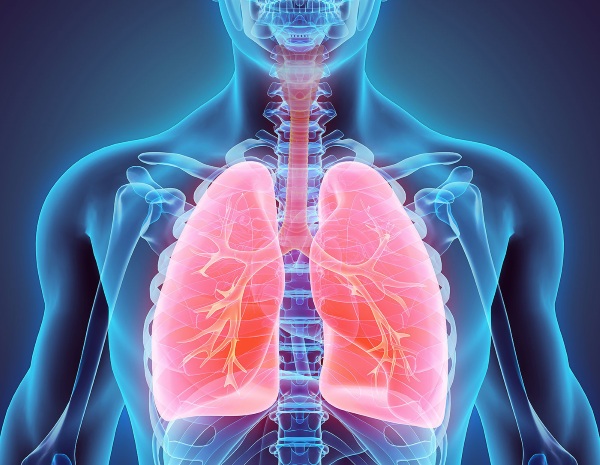
The cardiovascular system
The work of the cardiovascular system is strengthened and optimized. Her recovery takes place. The bike acts as a cardiovascular machine. There is a stimulation of the cardiovascular system, activation of all its mechanisms. An intense load on the muscles leads to a decrease in the number of heart contractions, which leads to an overall improvement in this body system.
Against varicose veins
Cycling improves vascular health. Thanks to the active rotation of the pedals, the blood flow is accelerated many times. Stagnation in blood vessels is eliminated. 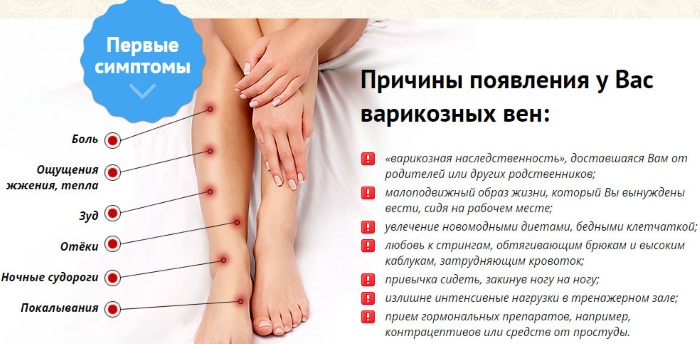
Rules and guidelines
Riding a bike is enjoyable, comfortable and rewarding if you follow certain rules and recommendations. The bike must be in good condition to avoid harm to the cyclist.
Equipment preparation
A cyclist's correct gear should include a backpack that fits comfortably over the back.
When traveling on a bike, you must bring:
- pump for cameras;
- repair kit with a set of tools, a spare camera and glue;
- water bottle (can be mounted on the frame);
- snack food (fruits, nuts, bars).
Correct fit
The correct seating position will help make the ride comfortable and enjoy the ride. Landing can be walking, racing or touring.
- Walking landing achieved with the saddle down and the handlebars up. Perpendicular body position relative to the ground. Lack of stress on the muscles. The head is in a comfortable position for viewing the surroundings. It is worth considering that with such a landing there is a load on the spine when driving off-road.
- Racing fit - saddle up and handlebars down. The bulk of the body is supported by the arms. Suitable for long and fast road trips. The load on all muscle groups is balanced.
- Tourist landing accommodates the best of walking and racing fit. The seat is slightly below the steering wheel. Cyclist's torso tilt - 450... Allows you to combine the even distribution of the load on the muscles and the ability to see the surroundings during the trip.
The important point is to set up and adjust the saddle. Do not set the saddle too low to avoid knee problems. Optimal height with a straight leg and a heel on the pedal. The position of the saddle is preferably as parallel to the ground as possible.
The position of the head while riding should avoid undue stress on the neck muscles. Turning your head to the side will periodically relax these muscles.
A correct fit implies the optimal position of the arms parallel to the body. When moving over bumps, the arms should be relaxed to improve cushioning.
Route
Cycling must be safe.
Rules concerning the route of the cyclist:
- Knowledge of traffic rules is required to avoid accidents.
- The first trips are best done with experienced colleagues for safety net along the way, timely advice and recommendations.
- Regular trips will help you learn how to predict the actions of drivers on the road.
- Before traveling, you need to study the intended route with an emphasis on transport stops, intersections, congestion of cars and potentially dangerous areas.

 Don't miss the most popular column article: Glutamic acid - what it is, why and how it is used in sports, bodybuilding.
Don't miss the most popular column article: Glutamic acid - what it is, why and how it is used in sports, bodybuilding.Approximate training plan
When drawing up a training plan, you need to take into account some points:
- It is better to start classes from 20 minutes, gradually bringing the training time to 2 hours, which can be divided into morning and evening workouts for 1 hour.
- It is necessary to conduct training 2 to 3 times a week with breaks.
- The travel distance for beginners is 10 km, for experienced cyclists - up to 60 km.
- A steady ride should alternate with ups and downs.
- It is better to choose the time in the morning or in the evening, so as not to study under the rays of the scorching sun. Avoid inclement weather.
- Using low rpm and high pedal force can injure your joints.
Approximate scheme of a half-hour workout:
- 10 min. calm ride;
- 2 minutes. climbing the mountain, increasing the load;
- 2 minutes. - on a flat road;
- 5 minutes. - movement with an increase in speed for 30 seconds, then calm movement;
- alternating uphill climbs with movement on flat terrain;
- last 5 minutes - steady, calm movement.
By choosing a bike according to your parameters and observing the rules of riding, you can get the most out of cycling and avoid possible harm to health.
Author: Anna Nika
Article design: Mila Friedan
Video about the benefits of a bicycle
What happens if you ride a bike every day:

